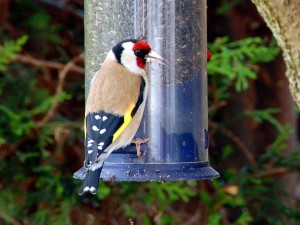 There’s nothing quite like watching birds flit around your yard, adding color and vibrant life to the winter landscape. February is National Bird Feeding Month, a celebration that promotes bird feeding and bird watching. If you’re an avid bird-watcher, you probably have a good idea of how to attract winter birds with seed, suet, and fruit. But if you’re new to the game, it’s the perfect time for a winter bird feeding refresher.
There’s nothing quite like watching birds flit around your yard, adding color and vibrant life to the winter landscape. February is National Bird Feeding Month, a celebration that promotes bird feeding and bird watching. If you’re an avid bird-watcher, you probably have a good idea of how to attract winter birds with seed, suet, and fruit. But if you’re new to the game, it’s the perfect time for a winter bird feeding refresher.
How to Attract Winter Birds to the Garden
You never know which birds might show up in your garden, but you can slant the odds in your favorite bird’s favor. Attract specific Georgia-native birds to your winter garden by using the right bird feed.
- Black oil sunflower seeds attract such beauties as the American Goldfinch, the Blue Jay, the Downy Woodpecker, the Brown Thrasher, the European Starling, the Northern Cardinal, and the Red-Winged Blackbird.
- Like black oil sunflower seeds, cracked corn attracts the Blue Jay and the Brown Thrasher. It also attracts the Brewer’s Blackbird, the Chirping Sparrow, the Eastern Meadowlark, and a variety of doves.
- Want to attract American Robins, Baltimore Orioles, Eastern Bluebirds, or Hermit Thrushes? Add fruit to your bird feeder.
- Hulled sunflower seeds are favorite winter fare for Brown Creepers, Brown-Headed Cowbirds, Carolina Wrens, Pine Warblers, Tufted Titmouses, and a variety of winter sparrows.
- Mealworms are just the ticket to attract the Red-Breasted Nuthatch, Ruby-Crowned Kinglet, and Yellow-Bellied Sapsucker.
- Suet is a dietary staple for many winter birds. Look for Baltimore Orioles, Blue Jays, Common Grackles, Northern Mockingbirds, and Yellow-Rumped Warblers enjoying the suet spread this season.
- Want to introduce more variety to winter bird-watching bingo? Experiment with millet, milo, nyjer, oats, peanuts, safflower, and sugar water in your winter bird feeders.
Transform your garden, regardless of the season. Visit Ace of Gray for bird feeders, bird feed, bird baths, and winter plants to attract native Georgian birds.
